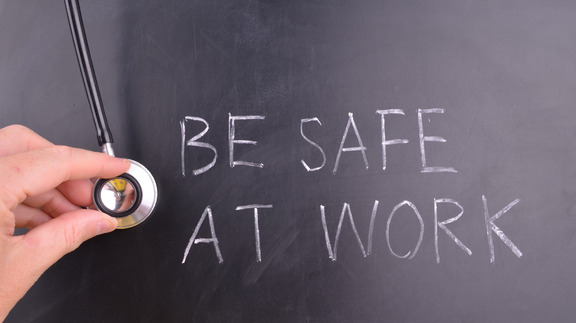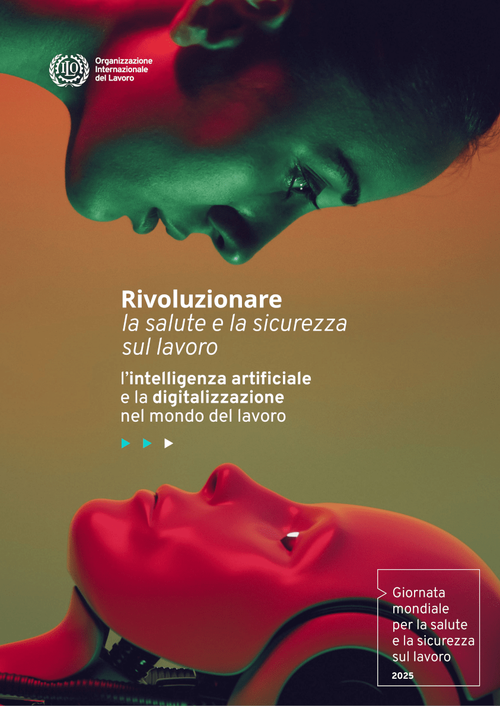International Day for Occupational Safety 2025

How Artificial Intelligence is Revolutionizing Health and Workplace Safety
Digital transformation is now a daily reality, and workplace safety is today at the center of this technological revolution. The International Day for Safety and Health at Work, celebrated on April 28, becomes this year the ideal opportunity to explore how artificial intelligence (AI) and digitalization are redefining standards, strategies, and tools for the health and protection of workers.
This article analyzes recent data, regulatory scenarios, and technological innovations that are shaping the future of workplace safety, with a focus on digital solutions and the opportunities offered by AI.
Work Safety in Italy: Numbers and Critical Issues
The protection of workers' health remains an absolute priority, as demonstrated by the data from the latest INAIL report (data related to 2023):
- 590,000 injury reports registered in a year.
- 1,147 reports of fatal accidents mainly related to high-risk sectors.
- 72,000 reports of occupational diseases, of which about one third concern musculoskeletal disorders.
These figures represent people, families, communities. They demonstrate that, despite progress, the road to fully safe and healthy work environments is still long. A proactive approach, focused on prevention and the rapid adoption of new technologies, is necessary.
The Digital Revolution of Workplace Safety
The 2025 theme according to ILO
The International Labour Organization (ILO) has chosen for 2025 the theme “Revolutionizing health and safety at work: artificial intelligence and digitalization in the world of work”. The global campaign focuses on how new technologies - including automation, extended reality, smart monitoring systems, and safety algorithms - are radically transforming practices and tools for the protection of workers.

Main technological innovations
The adoption of AI and digital systems offers a range of concrete benefits:
- Automation of the processes of identification, monitoring, and mitigation of risks, reducing human errors and speeding up responses to critical issues.
- Predictive analysis of incidents, thanks to the ability of AI to identify hidden patterns and complex correlations between gender, age, production sector, and geographical area.
- Wearable intelligent systems, IoT sensors, and devices for real-time data collection, useful for monitoring environmental parameters or physical stress signals in workers.
- Augmented reality (AR) and virtual reality (VR) for immersive training and risk scenario assessment without directly exposing workers to danger.
- HR management algorithms, which optimize activity scheduling, shift rotation, prevention of human error, and detection of psychosocial distress signals.
Opportunities and challenges of digitalization
The application of AI to workplace safety presents new opportunities and challenges:
- Proactive approach: Companies can evolve from mere regulatory compliance to predictive models that anticipate critical issues and drastically reduce accidents and occupational diseases.
- Customization of prevention: Advanced analysis allows for targeted strategies to be adopted for categories of workers, sectors, or departments that are particularly at risk.
- Regulatory adaptation: The rapid technological evolution requires a continuous update of corporate policies, internal training systems, and collaboration with regulatory bodies.
- Ethical management and privacy: It is essential to implement measures for the protection of collected data and to ensure that AI is used to support and not to replace human oversight.
Practical Applications of AI in Workplace Safety
Real-time trend and risk analysis
Artificial intelligence allows to:
- Process huge volumes of historical and real-time data, identifying risk conditions not visible with traditional methods.
- Optimize predictive maintenance interventions on critical machinery and plants.
- Automatically report anomalies in production processes, triggering timely alarms.
Advanced training and risk simulation
The use of virtual reality allows:
- Immersive training on specific safety procedures, improving effectiveness compared to traditional training.
- Realistic emergency simulations to verify operational readiness and refine evacuation or containment strategies.
Customized monitoring of workers
Thanks to wearable devices and smart sensors, companies can:
- Monitor the psycho-physical well-being of workers in areas most exposed to ergonomic or stressful risks.
- Detect signs of fatigue, tiredness, or prolonged exposure to harmful substances.
- Intervene promptly in case of exceeding predetermined risk thresholds, preventing the onset of permanent damage.
The Corporate Experience in Security 4.0
Our mission is to support you in adopting advanced technological solutions for corporate security. Thanks to the experience gained in cross-industry projects, we help companies to:
- Develop customized strategies that integrate artificial intelligence tools, IoT sensors, and advanced monitoring systems.
- Implement digitalized procedures for near-miss reporting, audit management, and updating preventive measures.
- Train staff in the use of new technologies, ensuring awareness, responsibility, and a widespread safety culture.
The Role of Social Partners and Institutions
The introduction of advanced technologies requires active collaboration between businesses, worker representatives, regulatory bodies, and institutions. The principles of data protection, algorithmic transparency, and participatory prevention remain essential cornerstones of workplace safety even in the digital age.
Towards a New Standard of Safety and Innovation
The International Day for Safety and Health at Work 2025 is an invitation to reflect and act:
- Companies are called to seize the potential of artificial intelligence and digitalization.
- The adoption of advanced tools allows for the promotion of truly safe, efficient, and sustainable work environments.
- Innovating safety means investing in people, preventing accidents, and enhancing the culture of shared responsibility.
Follow us to stay constantly updated on the initiatives, projects, and solutions we can offer to transform corporate security into a true competitive advantage. Discover how our experience can help you improve the protection of your employees and make your company a leader in prevention.